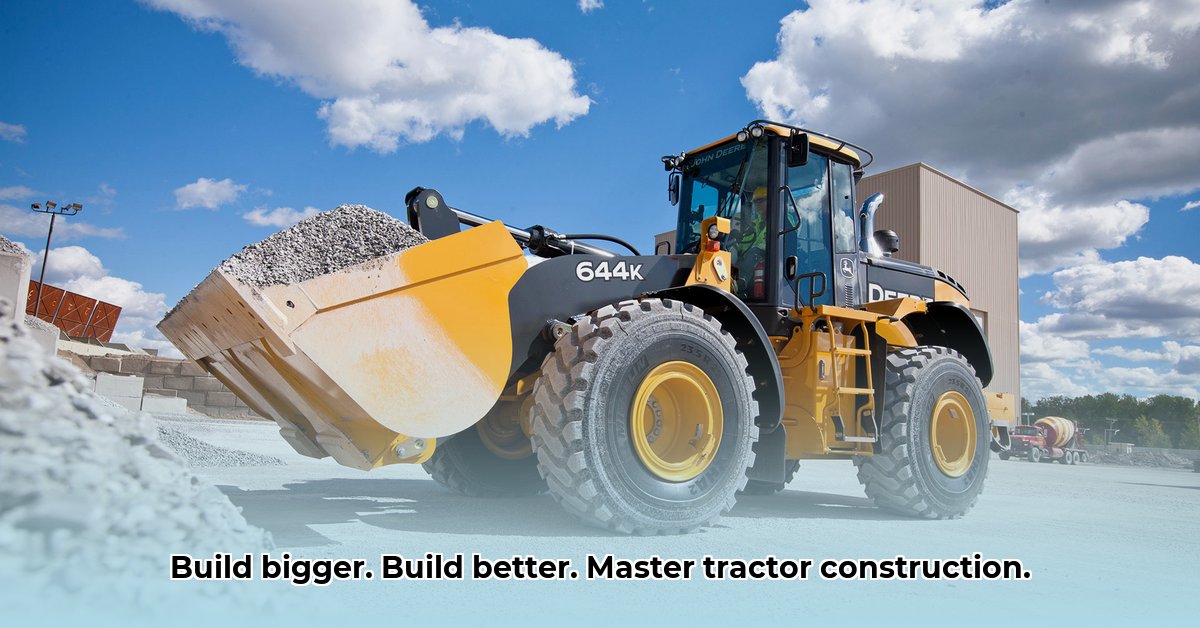
Tractor Construction: A Deep Dive into Modern Building Techniques
Tractors are indispensable in construction, particularly in demanding environments like the Bay Area. This article delves into the intricate construction of modern tractors, exploring their components, manufacturing processes, technological advancements, and maintenance needs. Understanding these aspects is crucial for selecting the right equipment for any construction project, maximizing efficiency, and minimizing environmental impact. The ever-evolving landscape of sustainable practices and automation significantly influences the design and functionality of these powerful machines. For a more in-depth look at tractor construction, check out this detailed guide.
Major Components & Their Function
A tractor is a complex interplay of several key components:
The Engine: The Heart of the Machine
The engine is the powerhouse, converting fuel into mechanical energy. While powerful diesel engines remain prevalent, offering high torque for heavy loads, gasoline engines and electric motors are gaining traction. Diesel engines, while robust, can be less fuel-efficient and produce higher emissions. Electric motors, conversely, offer quieter operation and zero tailpipe emissions, but currently face limitations in range and charging infrastructure. This market shift highlights the growing emphasis on sustainability. What percentage of new tractors sold in California are electric or hybrid models? This is a critical question facing manufacturers and consumers alike.
The Transmission: Power Management and Control
The transmission translates the engine's raw power into usable speed and torque for various tasks. Modern tractors often feature sophisticated electronic controls for smooth shifting and optimized power management, improving operator efficiency. However, these advanced systems can also increase repair complexity and cost.
The Hydraulic System: Providing Power and Precision
The hydraulic system, a network of pumps and pipes, provides power to implements like plows and backhoes, enabling precise movements and heavy lifting. Hydraulic system leaks are a serious concern, requiring immediate attention and potentially costly repairs. Maintaining correct hydraulic pressure is paramount for safe and efficient operation.
The Chassis: The Foundation of Strength
The chassis, or frame, provides structural integrity, supporting all other components. Typically constructed from high-strength steel alloys, the chassis design directly impacts the tractor's overall durability and lifespan. The use of lighter materials, such as aluminum alloys, is increasing as manufacturers strive to improve fuel efficiency.
Construction Materials & Processes
Tractor construction involves a combination of advanced materials and precise manufacturing techniques. High-strength steel alloys are preferred for their robustness and resistance to stress and vibration. Aluminum, lighter but potentially less durable, is incorporated where weight reduction is a priority, notably in engine blocks and increasingly the chassis itself.
Manufacturing employs various processes: casting (pouring molten metal into molds), forging (shaping metal with pressure), and machining (precisely cutting and shaping metal components). Welding is critical in joining parts, requiring skilled welders to ensure strong, vibration-resistant joints. Quality control is of paramount importance; welding defects can lead to catastrophic failures.
Technological Advancements: Shaping the Future of Tractors
Modern tractors are increasingly incorporating advanced technologies to boost efficiency and precision.
GPS Guidance Systems and Automation
GPS-guided systems enable automated steering, reducing operator fatigue and improving accuracy in planting and tilling. Automated guidance systems further enhance efficiency by enabling autonomous operation, minimizing overlaps and fuel waste. This contributes directly to enhanced productivity and reduced environmental impact. What is the average increase in efficiency reported by farmers using automated guidance systems? This data clearly shows the growing trend toward smart farming.
Sustainable Engine Technologies
The industry is aggressively pursuing environmentally friendly solutions. Electric motors, offering zero tailpipe emissions, are gaining prominence, although charging infrastructure and range remain challenges. Biofuels, derived from renewable sources, present an alternative to fossil fuels, reducing the carbon footprint of agricultural operations. However, adoption depends heavily on biofuel availability and cost-effectiveness. The ongoing development of advanced emission control systems further tackles environmental concerns.
Maintenance & Repair: Ensuring Long-Term Performance
Preventative maintenance is crucial for extending a tractor's lifespan and avoiding costly repairs. This includes regular lubrication of moving parts; careful inspection for wear and tear; and timely servicing according to the manufacturer's recommendations. Proper maintenance contributes to fuel efficiency and improved safety. Neglecting maintenance often results in more significant—and expensive—repair needs later.
Conclusion: Choosing the Right Tractor for Your Needs
The construction of modern tractors is a complex process involving advanced materials, precise manufacturing, and cutting-edge technology. Understanding these aspects is essential for making informed decisions when acquiring or renting tractors. The increasing emphasis on sustainability and automation is transforming the industry, offering improved efficiency and reduced environmental impact. The market is moving towards more sustainable, fuel-efficient, and technologically advanced machines. Choosing the right equipment requires a careful consideration of your specific needs, budget, and environmental priorities.